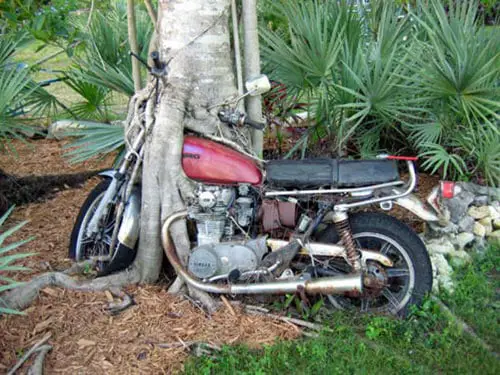
Teenager Ashleigh Morris can't go swimming, soak in a hot bath or enjoy a shower after a stressful day's work - she's allergic to water.
Even sweating brings the 19-year-old out in a painful rash.
Ashleigh, from Melbourne, Australia, is allergic to water of any temperature, a condition she's lived with since she was 14.
She suffers from an extremely rare skin disorder called Aquagenic Urticaria - so unusual that only a handful of cases are documented worldwide.
When Ashleigh gets wet her body explodes in sore, itchy red lumps that take about two hours to ease.
She has to wash. But showering is a painful experience and she can only do it for a minute at a time.
These brief showers are the only contact Ashleigh has with water. The one thing she doesn't miss is the washing up.
"People find it hard to believe, they say things like 'Oh my god, how do you wash.
"That makes me feel dirty, but I consider myself a very clean person," she said.
Most of us take showering for granted but for Ashleigh it's a painful endurance that often reduces her to tears.
"Although my rash is unsightly, and often looks like I'm diseased, the feeling is so much worse than it looks," she said.
"I can't go anywhere for about two hours afterwards because it's so severe.
"There's been many occasions where I've been so itchy, I've made myself bleed from scratching."
Away from water pretty Ashleigh appears like any other healthy teenager.
She leads a busy life studying Journalism and Public Relations at university and working in an office.
But if she gets wet she attracts unwanted attention.
"People stare at me in the street," said Ashleigh who lives with her mum Louise Miller, 42.
"After a shower I stay at home until it goes away, that frees me of the burden of having to explain."
Ashleigh spends a lot of time explaining her condition because few people have heard of it. Most doctors and dermatologists have never seen a case of it. "Many people don't even believe me when I tell them," said Ashleigh, who hardly believed it herself at first.
She developed the condition five years ago after an acute case of tonsillitis. She was prescribed a heavy dose of penicillin that rid her of the tonsillitis but left her with another problem.
"I suddenly started getting a rash after I showered or swam," says Ashleigh who used to swim regularly and spend a lot of time at the beach.
"I tried to ignore it but it got progressively worse so I went to see a dermatologist."
Ashleigh's dermatologist, Professor Rodney Sinclair, told her the penicillin had altered the histamine levels in her body and caused the Aquagenic Urticaria to occur.
There is no cure and no successful treatment for the condition so the gravity of the situation began to dawn on the 14-year-old Ashleigh.
"I was in disbelief for a while, but I soon realised how serious it was.
"I cried for a few hours, then picked myself up, and kept going. I realised it was something I had to live with," she says.
So Ashleigh found ways to avoid water - she stopped doing sports and anything that made her sweat.
She makes sure she stays in air-conditioned places and always has an umbrella in her car. Her family and boyfriend of three years, Adam, 23, are very supportive but her condition makes intimate moments with her Adam a little difficult.
"We have to sleep with a sheet between us at night, and I can't go near him if he's sweaty," said Ashleigh.
Even the experts seem a little vague about Aquagenic Urticaria.
Dermatologists agree there's an association with elevated blood histamine levels, but there are other processes at work since antihistamine drugs often provide no relief at all.
Nina Goad of the British Association of Dermatologists says: "There isn't a wealth of information about Aquagenic Urticaria because it's extremely rare.
"We're not sure how many cases there are in the world and we do not yet fully understand the precise mechanisms that trigger the weals."
[via dailymail]





























































